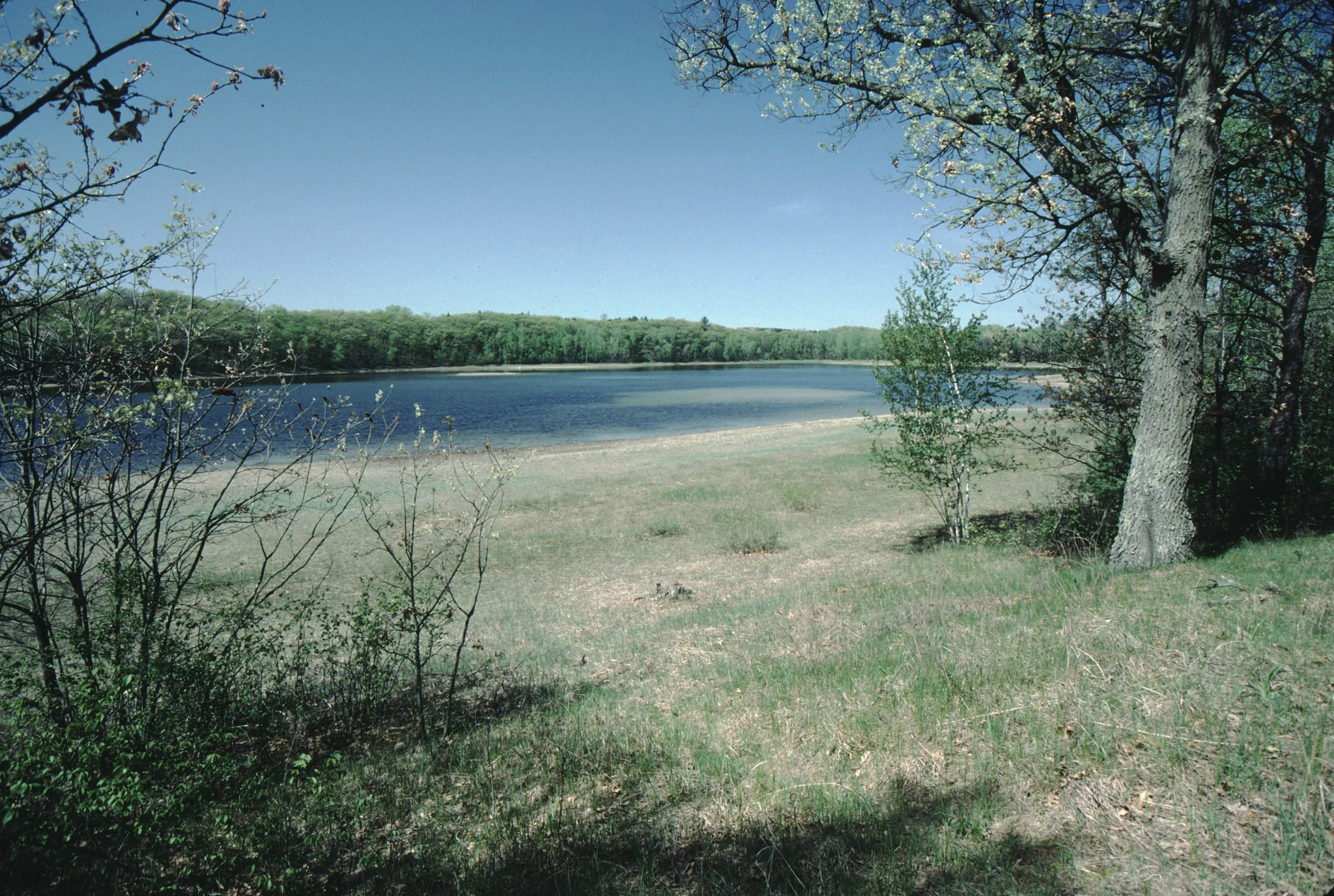Contact: Adam Freihoefer, DNR Water Use Section Chief
Adam.Freihoefer@wisconsin.gov or 608-514-6058
DNR Recommends Regional Strategy For Central Sands High-Capacity Well Withdrawals, Seeks Public Comment
 An archival image of the Plainfield Tunnel Channel Lakes in Waushara County, which have experienced a reduction in water levels due to groundwater withdrawals for irrigated agriculture.
Photo credit: Wisconsin DNR
An archival image of the Plainfield Tunnel Channel Lakes in Waushara County, which have experienced a reduction in water levels due to groundwater withdrawals for irrigated agriculture.
Photo credit: Wisconsin DNR
MADISON, Wis. – The Wisconsin Department of Natural Resources (DNR) today released a draft report summarizing its Central Sands Lakes Study and is accepting public comment on the results.
Over the past three years, the DNR and partners have evaluated and modeled the impacts of groundwater withdrawals from high-capacity wells on Pleasant, Long and Plainfield Lakes in Waushara County, as required by state law. The Central Sands Lakes Study built on decades of studies evaluating groundwater and surface water connections in the Central Sands region.
While the three study lakes fluctuate naturally, the DNR determined that groundwater withdrawals for irrigated agriculture significantly reduce water levels on two of three study lakes: Long and Plainfield.
“This is one of the most comprehensive studies looking at the connectivity between groundwater withdrawals and lakes in the Midwest,” said Adam Freihoefer, DNR Water Use Section Chief.
The study shows that the three lakes’ levels are being reduced as a result of the collective impact from many high-capacity wells rather than any one high capacity well. For example, over 200 high-capacity wells around Long Lake collectively result in significant impacts to the lake’s ecosystem and recreational uses.
The study supports past Central Sands-area research, which also determined that high-capacity wells collectively reduce nearby water resources.
“As a result, we need a comprehensive strategy that empowers stakeholders to remedy these significant impacts to water resources in the region,” Freihoefer said.
As part of that strategy, the DNR recommends creating and implementing a water-use district to manage regional water use.
A draft report of the study findings and DNR recommendations is available on the DNR’s website. The DNR will also hold a virtual public hearing on April 28 at 6 p.m. to discuss study findings and recommendations. Participants can join online via Zoom or via phone by calling toll-free at 312-626-6799, meeting ID 867 4094 9147#.
The public is encouraged to submit comments regarding the DNR’s study report, appendices and the DNR’s recommendations. Submit comments by May 7, 2021, to:
Department of Natural Resources
C/O Nicki Clayton, Water Use, DG/5
101 S. Webster St.
P.O. Box 7921
Madison, WI 53707
Or email: DNRDGCentralSands@wisconsin.gov
For more information on the Central Sands Lakes Study, click here.

